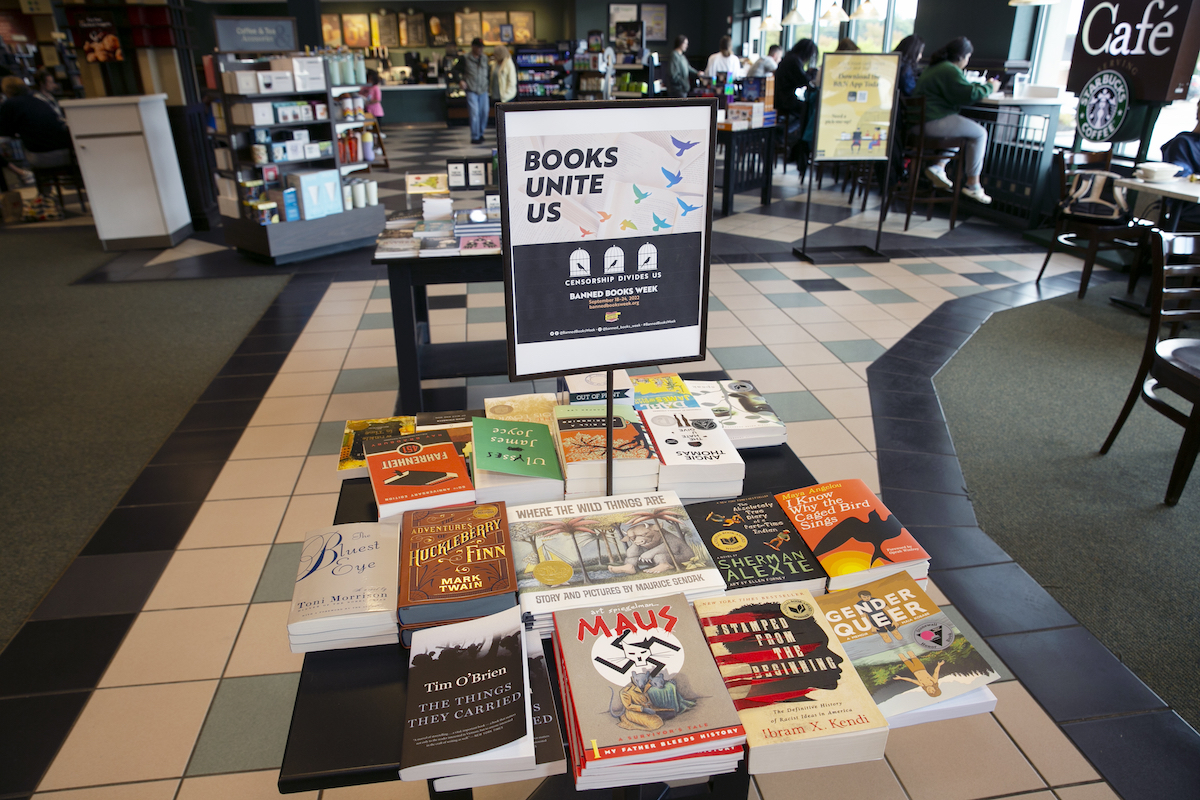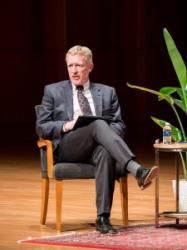At its best, a democratic polity ought to deal well with complexity, this complexity composed of clashing ideas and principles as well as the interests of multiple actors and stakeholders. Such a polity will seek proximate solutions that require constant fine-tuning. It will recognize trade-offs and seek to calculate costs and benefits and recognize that nothing is risk-free. Prudence and restraint will be its watchwords.
Ideology and social media are the enemies of complexity. In rendering the world simple, they make democracy untenable, believing they possess a magic key that opens all locks. Moreover, ideologues and tweeters tend to be very attentive to the specks in the eyes of others and typically miss the logs in their own. Drawing attention to “burns” and how others were “owned” in the media environment offers no substitute for the dissemination of information central to democratic life.
This, too, brings us to some complexity. Does the freedom to express an idea require a concomitant imperative to receive the idea, or to insist that others are required to hear the idea; and, if so, would that imperative result in a constitutional right? Would that right then depend in some fashion on the medium of transmission? And how would our assessment of the medium change if we were involuntarily subjected to it or could access it at will?
Think the pot has too many ingredients already? Throw in disagreements between parents and state officials over who ought to be raising children and then—just for good measure—a dash of teenagers rebelling against authority figures. Cook it all up and you have the current “book banning” stew. “Book banning” is apparently what the other side does, while one’s own side “protects children” from “unsafe material.” Thus we get those who ban Huck Finn apoplectic over the removal of Toni Morrison’s Beloved, while those who don’t want children reading My Two Dads and Me will make fun of the pearl clutching induced by Dr. Seuss. Given the intensity of our culture wars, we shouldn’t wonder that it has resulted in debates over which books are acceptable and which aren’t.
The language misleads us, however. A book “banning” doesn’t necessarily mean it can’t be printed or sold; it typically means that it can’t be available in certain contexts, and those contexts typically involve either captive audiences or decisions that have to be made about matching material to an audience. Which brings us to the school library.
We can’t dispense with age-specific classifications. Movie ratings are determined by trying to match up the content of the movie to different ages. Our whole school system is largely based on the slightly ludicrous idea that content should be pitched at a specific age level. We organize our sports on the basis of age groups. In other words, we operate with the assumption that “appropriateness” is intrinsically related to a child’s development, and that chronological age is as useful a marker of such development as any.
These distinctions result not simply from considerations of intellectual or physical development. Often when we say something isn’t “age appropriate,” we refer to relative stages of emotional development, capacity, and sensitivity. These relative distinctions don’t admit easily of crude categorizations, and thus don’t scale well. Having three children myself, I can assure the reader that not all 10-year-olds are created equally, and thus equally capable of “handling” material. I draw attention here to the fact that parents are in the best position to make such distinctions, and also possessed of the capacity to modulate material to the sensitivities of a particular child.
Here we bump into a peculiar feature of our schools systems, namely, that they are governed by multiple and often competing authorities. The most obvious authorities are local school districts and school boards, but state governing boards exercise tremendous power over what goes on in schools. Then, too, we have our federal education directors who operate on principles of mass democracy and social scientific aggregation, and thus necessarily rub against particularity, most notably that of parents and their children.
The common school movement at its inception mobilized the judgments of experts and reformers against those of parents. Conflicts between parents and school leaders, baked into our very system of education, become especially pronounced when they involve a clash of fundamental values, and nowhere will this clash be experienced more keenly than when parents believe classroom instruction undermines parental prerogatives concerning the raising of children. The problem intensifies when children occupy space away from the parents, and thus parents lose a good deal of their ability to filter.
Thus it should come as no surprise that many battles between schools and parents involve materials available in the school library. I recall from my own school days going to the school library every Friday so I could read the latest issue of Sports Illustrated, only to be doubly disappointed when, once a year in the dead of winter, a particular annual issue mysteriously never made its way onto the shelf. I only wanted to read it for the articles, but our school librarian feared otherwise.
Nor could he be blamed for his censoriousness. Most people would agree that school libraries should not be filled with books whose sole purpose is to appeal “to prurient interests.” Nor would we expect school libraries to display books that have noxious ideas about race or sexuality unless they had some historical or cultural significance. A librarian might recommend Mein Kampf not because he thinks it has a lot of good ideas in it but because he recognizes its central importance in understanding something we’d rather not repeat.
In other words, populating a library requires judgment, and this judgment bears at least some relationship to what the Supreme Court offered as a test in its pornography cases: contemporary community sensibilities. One could exempt schools from such sensibilities, of course; or one might, as seems to be often the case, make the argument that schools as a matter of principle ought to operate contrary to such sensibilities, on the assumption that the surrounding community is benighted.
But this is shortsighted, and not only because the schools are embedded in these communities and, even more importantly, totally dependent on these communities for their financial sustenance. No, the bigger issue is that the students who populate these schools also come from these communities, and if the rupture between school and home becomes too great, you will end up with one of two situations: either the child will become deeply conflicted and confused, or you will end up with a struggle between school and home for the mind and soul of the child. The more diligent the parent and the more ideological the school, the more likely you will end up with a serious battle on your hands.
In 1975, the Island Trees School District in New York removed from the school library books written by, among others, Kurt Vonnegut, Langston Hughes, Desmond Morris, and Bernard Malamud, claiming the books contained anti-American, anti-Christian, and obscene material. Seven years later, a narrow plurality of the Supreme Court decided in Island Trees Union Free School District v. Pico by Pico that this removal constituted a violation of students’ First Amendment rights. Without going into fine constitutional distinctions, what’s of interest to us is how divided the justices were on the question. The main decision was written by a plurality of three with two concurrences that agreed with the outcome but deeply disagreed with the plurality’s reading of the Constitution. The case is a window into all the issues mentioned above, and demonstrates that these debates are not easily resolved. The Court couldn’t get nine people to agree; good luck getting 330 million.
Many of the current “banning” initiatives are parent-driven, most notably the organization Moms for Liberty. Thus it was in the Island Trees case as well, but I believe the school district responded to parent concerns with a process we might do well to imitate. It’s not perfect, but it’s not bad. From the SCOTUS ruling:
The Board appointed a “Book Review Committee,” consisting of four Island Trees parents and four members of the Island Trees schools staff, to read the listed books and to recommend to the Board whether the books should be retained, taking into account the books’ “educational suitability,” “good taste,” “relevance,” and “appropriateness to age and grade level.” In July, the Committee made its final report to the Board, recommending that five of the listed books be retained and that two others be removed from the school libraries. As for the remaining four books, the Committee could not agree on two, took no position on one, and recommended that the last book be made available to students only with parental approval.
This strikes me as a reasonable practical response. The default should be against removing books that have any serious artistic, social, political, or moral value or significance. It would be difficult to see how removing Langston Hughes or Ta-Nehisi Coates would be motivated by anything other than racism. I think Between the World and Me is a bad book, but that doesn’t mean I’d keep people from reading it.
Of course, the devil is in the details. Obviously we are not going to agree on what constitutes “value,” but disagreement is not an excuse for inactivity. Decisions have to be made, and the standards by which we make such evaluations—and this is central to my argument—have no appeal to a source outside the decision-making process itself. Any such appeal would quickly bleed into dogmatism and also up the ante for those on the losing end of such decisions. When the ratchet only moves in one direction, so that “I won’t ban your books if you won’t ban mine” becomes “if you ban that book I’ll ban two of yours,” you end up with our present situation, where the number of books being removed from libraries has increased exponentially over the past few years.
Any reasonable policy realizes that you can’t allow everything to be in the library, but it also knows that, generally speaking, the more books you have, the better, in no small part because books get us to rethink the world and ourselves. A homogeneous library is an impoverished one. At the same time, efforts to shape such rethinking have to take into account mental and emotional development as well as the need to instill in children a coherent and healthy view of the world. Skepticism fits adults better than it does children.
Many of us have had the experience of walking into a person’s house for the first time and spending some time investigating the books on their shelves. We do this because we believe those books will tell us something consequential about that person; it will be a glimpse into his or her soul and character. It’s easy to be too cavalier about what sits in our public (or school) libraries and think that those books don’t tell us something significant about who we are as a public. In the case of school libraries, however, we sense that they tell us what we will become as a public, and thus the stakes are quite high. But it seems imprudent to allow arguments about books to operate as a proxy for the deeper debate we are having about what kind of society we are going to be, just as it is foolish to think that purging the shelves will forestall such debate. Arguing about books without arguing about the deeper questions will prove a useless distraction at best, and more likely introduce a new set of pathologies into our already fraught arguments—namely, intolerance, anger, hatred, and recrimination, which are dispositions we can’t afford.

